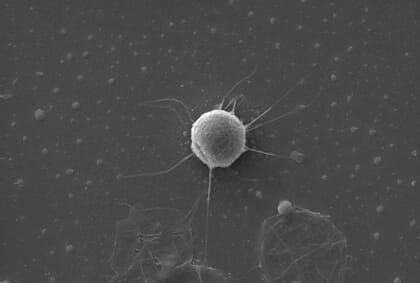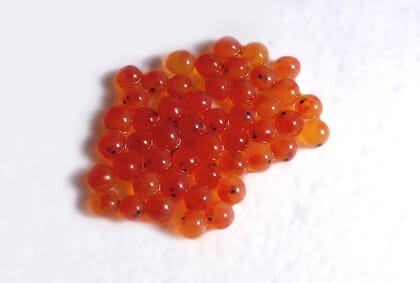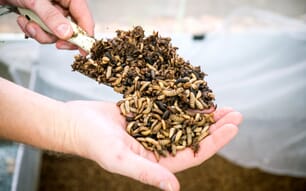Saprolegnia – a type of water mould that can harm fish eggs and juvenile fish – is thought to significantly reduce stocks at Scotland’s salmon farms every year. Now, a multi-partner cross-sector collaboration is seeking to minimise those losses and boost the availability of farmed Scottish salmon by compiling a ‘big data’ resource that will increase understanding of the fungal infection and its causative factors.

© University of Aberdeen
The project, Risk factors for escalating saprolegniosis outbreaks in salmon farms (RIFE-SOS), is led by Professor Pieter van West, Director of the International Centre for Aquaculture Research and Development at the University of Aberdeen.
It brings together the knowledge of eight aquaculture companies with the expertise of leading academics at the Universities of Aberdeen and Glasgow to develop an information toolkit on how to pre-empt and control occurrence of the disease.
“We know that several factors can make fish more susceptible to Saprolegnia and that separate farms subject to similar conditions can be affected to very different degrees,” Peter explains. “Therefore, we would like to explore what are the main risk factors and which of those factors play a synergistic role in suppressing fish immunity to Saprolegnia. The greater our understanding of this, the more we can do to improve fish health and welfare, and increase production volumes.”
The £1.1m project is supported by £340,285 grant funding from the BBSRC Link initiative, with the remaining £732,628 of the project cost coming from industry and supported by grant funding from the Scottish Aquaculture Innovation Centre (SAIC). The RSPCA and Scottish Salmon Producers’ Organisation (SSPO) are also involved, providing support and guidance to partners.

© SSPO
“The sheer number and range of partners involved in this first-of-its-kind project underpins the scale of the issue,” reflects Heather Jones, CEO of SAIC, “and the size of the opportunity both for the sector and global food security if we can put more effective controls in place. The world population continues to grow, so too does demand for food, and aquaculture has a key role to play in helping meet that rising demand.”
In addition to establishing a best practice approach to the management of Saprolegnia, it is thought the 36-month project could potentially help predict the risk factors associated with other issues that can affect fish, further improving health and welfare.
The full RIFE-SOS project partnership includes Benchmark, Cooke Aquaculture Scotland, Europharma, Grieg Seafood Shetland, Landcatch Natural Selection, Marine Harvest Scotland, Pulcea; RSPCA, SAIC, SSPO, Scottish Sea Farms, the University of Aberdeen and the University of Glasgow.


